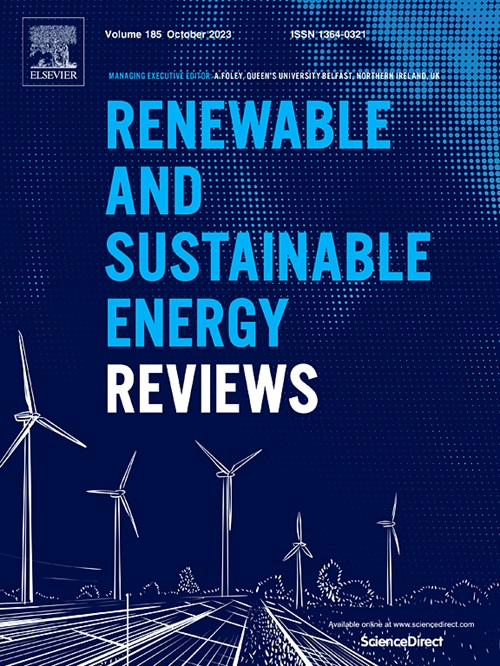Health problems near wind turbines: A nationwide epidemiological study based on primary healthcare data
IF 16.3
1区 工程技术
Q1 ENERGY & FUELS
引用次数: 0
Abstract
Epidemiological research on the association between wind turbines (WTs) and adverse health effects remains limited. This study integrated data from electronic health records from general practitioners with geospatial data on WT locations and noise emissions. Spanning a decade (2012–2021) and a yearly sample of 350,000 to 560,000 individuals living within 5 km of WTs, it investigated a broad range of health symptoms and conditions diagnosed in primary care, as well as medication prescriptions. Multilevel regression analyses generally indicated a lack of consistent and significant associations between distance (0–500, 500–1000 and 1000–2000 m) to WTs and prevalence of health problems, accounting for demographic and socioeconomic factors. While the prevalence of certain symptoms such as tension headache and depressive feelings increased within 500 m from WTs in later years, results were not statistically significant. Higher average noise levels (above 42 dB Lden) were associated with increased painkiller prescriptions in the most recent years. Only a small part of the sample lived within 500 m from WTs and was exposed to higher noise levels – a methodological challenge inherent to this topic. In light of the expanding deployment of WTs, more comprehensive epidemiological studies are necessary, combining objective morbidity data with self-reported symptoms, using the largest feasible samples near WTs. Refining exposure assessment with precise geospatial data at the individual level, incorporating information on sound characteristics such as amplitude modulation, and thoroughly controlling for relevant confounding and moderating variables are critical aspects that need to be considered in future research endeavors.
求助全文
约1分钟内获得全文
求助全文
来源期刊

Renewable and Sustainable Energy Reviews
工程技术-能源与燃料
CiteScore
31.20
自引率
5.70%
发文量
1055
审稿时长
62 days
期刊介绍:
The mission of Renewable and Sustainable Energy Reviews is to disseminate the most compelling and pertinent critical insights in renewable and sustainable energy, fostering collaboration among the research community, private sector, and policy and decision makers. The journal aims to exchange challenges, solutions, innovative concepts, and technologies, contributing to sustainable development, the transition to a low-carbon future, and the attainment of emissions targets outlined by the United Nations Framework Convention on Climate Change.
Renewable and Sustainable Energy Reviews publishes a diverse range of content, including review papers, original research, case studies, and analyses of new technologies, all featuring a substantial review component such as critique, comparison, or analysis. Introducing a distinctive paper type, Expert Insights, the journal presents commissioned mini-reviews authored by field leaders, addressing topics of significant interest. Case studies undergo consideration only if they showcase the work's applicability to other regions or contribute valuable insights to the broader field of renewable and sustainable energy. Notably, a bibliographic or literature review lacking critical analysis is deemed unsuitable for publication.
 求助内容:
求助内容: 应助结果提醒方式:
应助结果提醒方式:


